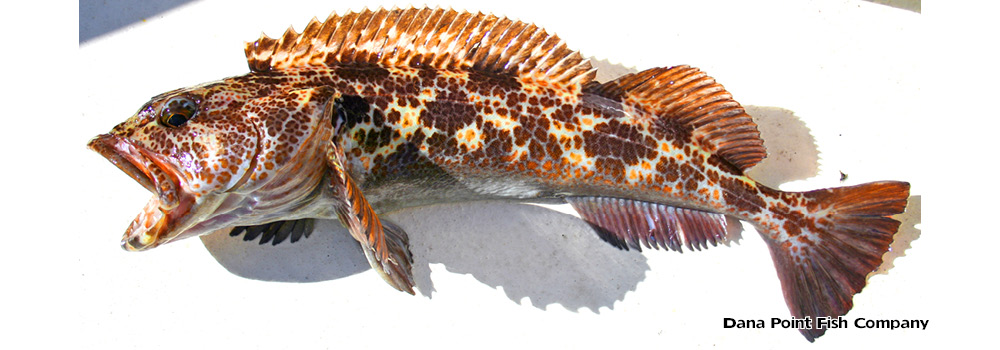Lingcod – Ophiodon elongatus. The only member of the Ophiodon genus. Not a true cod.
Common Names: Ling, Lincod, Bacalao, Blue Cod, Cultus. Other names: greenling, bluefish, buffalo cod, leopard cod, codfish, green cod, testoni, Pacific cultus. They are also called “buckethead” because of its large head.
Identifying Characteristics and Biology
- Lingcods have long, deeply notched dorsal fins and large, canine teeth.
- They have a bony support which extends back from the lower part of the eye across the cheek just under the skin.
- Lingcods have two large fleshy flaps over the eyes and the body is covered with small scales. There is one single lateral line.
- Length to over 4 feet, with the weight up to 70 pounds.
- Coloring is variable and is associated with its habitat: dark blue or green-brown with darker blotches outlined in orange or pale blue, to lighter brown or tan with spots and blotches of brown, green, orange, or yellow – and gray/green to whitish below.
- The lingcod is a voracious predator.
Range and Locations
- Lingcod are found from Western Gulf of Alaska south to Northern Baja, Mexico. Native to the North American west coast.
- A cold water species of fish, they are bottom dwellers looking for rocky areas.
Market Forms
- Lingcod meat is lean, sweet, and mild tasting.
- The fillets are thick and can withstand longer cooking times because of it. The fillet shapes are perfect for hors d’oeurves, and appetizer presentations.
- While the flesh may be sometimes have a blueish or greenish color tinge, this goes away with cooking.
- Their cheeks are large and with larger fish they can be removed and used like halibut cheeks.
- It can be found fresh or frozen.
- Popular and important fish to the sportfishing and commercial fishing industries. Taken by sportsmen from boats and rocky shores, with cut sardines or jigs. Fishing gear: Otter trawls, set lines, hook and line.
Resources:
Roedel, Phil M. Common Marine Fishes of California. CA DNR Bureau of Marine Fishes, 1948. Print. Fish Bulletin No. 68.

